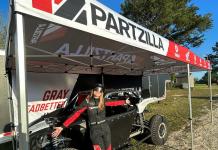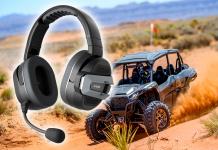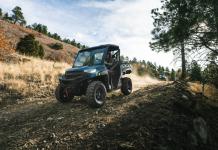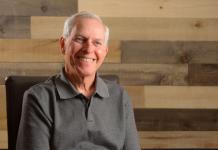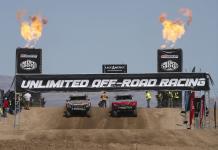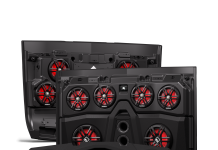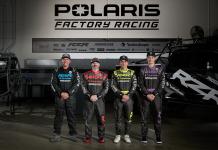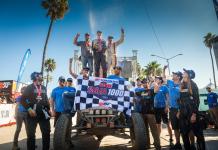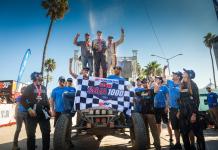The 2019 desert racing season wrapped up with a Baja 1000 unlike any other, as wild weather forced the race to be postponed for a day and led to an unpredictable course with plenty of changes. This year’s event rewarded the sport’s most strategic and patient drivers, and Cognito Motorsports’ Justin Lambert led them all with a perfectly planned race from start to finish.
In an exclusive interview, Lambert talks about how he and driving partner Victor Herrera scored the victory, how Cognito suspension dominated this year’s podium with teammates Wayne and Kristen Matlock and Matt Burroughs, and everything else that’s going on in the Cognito shop and race program:
 Congratulations on your first Baja 1000 victory! It was a hell of a year to win it with the crazy weather and even the race getting delayed by a day. What does it mean to you having your first Baja 1000 win come in a year like this?
Congratulations on your first Baja 1000 victory! It was a hell of a year to win it with the crazy weather and even the race getting delayed by a day. What does it mean to you having your first Baja 1000 win come in a year like this?
I had a Baja 500 win in 2017, but I’ve never had a Baja 1000 win. It’s been a dream of mine since I started racing off road about eight years ago to win one. Rain or not, the race goes on and so of course the goal is to win the Baja 1000 no matter what.
We saw rain in the forecast before we headed down to Baja, but we didn’t know it was going to be this much rain. It was pretty ridiculous, and you can kind of get down about the weather, but the fact is every racer needs to go through the same weather, so we knew it was going to be a challenge for everybody. Actually, we kinda thought of it as a little bit in our favor, because we’re pretty smart as far as when to hold back and when to go hard. Patience is a virtue out there, and I’m pretty patient and know when to back off and just get through a tough section. With that bad weather, we figured there were going be a lot of bad sections, and figured we were just going to take our time through those and let the attrition rate take its toll with a course this rough. We did just that and it paid off.
I can only imagine the adjustments you made on the fly had to be pretty significant.
There were rumors of the course getting shortened and all this different stuff, but all in all, SCORE did a really good job of postponing the race and repairing some of the course. They only skipped a couple miles on the west coast section, so it wasn’t that detrimental. Definitely with that much rain, best would be to pre-run it again but it just wasn’t in our schedule to fit in more pre-running. Without seeing the latest condition of the course, we wanted to make sure we were extra cautious for any washouts that weren’t there a few days prior to that.
With that being said, we just made sure that we kept all four tires on the ground and kept those tires turning. I’m sure everybody was very worried about the course, our equipment is sound so we were very confident come race day.
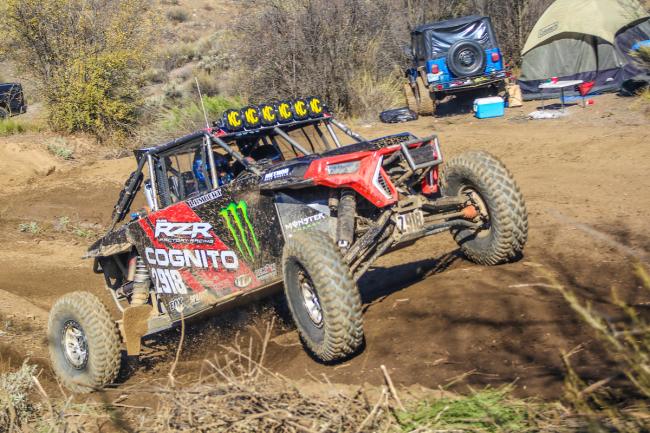
Victor Herrera started the race for you, and you took over a little before the halfway point. What was the driving force behind that plan?
Victor’s been racing in Baja for 20, 25 years. He knows Baja really well, he speaks the language, he’s started Baja 500s and Baja 1000s out of Ensenada dozens of times. Victor knows the course routes really well, he knows the ins and outs with all his experience. I knew that he could get me a good car and I could take it through the really rough and brutal stuff, Morelia Junction, San Felipe, all the way up to 580 because that was really rough terrain. The chances of breaking the car are higher later in the race, and I know the car the best, if anything went wrong, I had a better chance of fixing it on the trail than he would. We figured on myself taking the second half, or a little bit more than half, was probably the best strategy.
We have a limited number of guys on the team, and a limited number of chase trucks, so I knew that we could only split this one into two sections which worked well. I was in the car for 11 and a half hours or so, which was a long time in the car but when you’re behind the wheel and it’s as rough and as challenging and as technical as it was, your eyes are wide open.
You were fifth on the road when you got in the car—what was it like having to make passes on that course?
Starting 13th, Victor made his way through roughly eight other cars on his way to race mile 340. Our goal was to just keep the leader within 20 minutes by the time he handed me off the car. Because in reality, you have to make it to the last 15% of the race—then the race is really on. Stay within a 20-minute gap and then pour it on the last 150 or 200 miles was the goal. Getting in the car in fifth position with the leader (Wayne) Matlock 15 or 20 minutes in front of us was really exactly where we wanted to be. That way he was always going to be running from us because we had 4 minutes on him from corrected time since he started fifth.
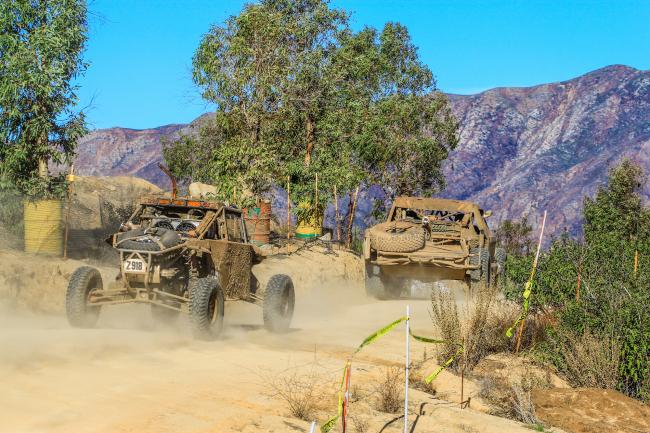
I’m not going to say Baja is wide open, but once you get to the San Felipe side, there are sections where there are multiple lines, and doing homework pays off. I got in at dark—it was about 10:15 at night. Coming down towards Morelia Junction is fast, after that there is a lot of nasty rough stuff, when you start to see lights ahead and you see that amber flickering, you start to wonder if you’re coming up on a UTV, or coming up on a truck or buggy, or what. You really don’t know until you get up on them, and it wasn’t real hard to get up on people just because the course was still wet and there wasn’t a ton of dust, so that was kind of nice. In those situations you thank yourself for doing the pre-run homework and knowing the course.
Then we get to race mile 495 and I think we’re sitting in third position, and I believe by 580 we were sitting in second. With 220 miles left, I wasn’t going to see my pit crew again until race mile 730. I left the pit and asked, “alright, where are we and how far,” they said I was in second and I had about an 18 minute gap. So I said, “alright, its time to race.” We left out of 580 and started pouring it on and seeing if we could catch Matlock, he is super-fast though. I just wanted to get within three-four minutes of him, that’s all I needed to do. It just so happened that he had a mechanical issue and we caught him on the backside of the summit still in the sand, and got past him. And then we were first on the road, staying that way all the .
Of course, it wasn’t just a big weekend for you—your company, Cognito Motorsports, had a special weekend. Cognito suspension locked out the top four overall finishing positions in UTV and won both of the major classes. What set Cognito suspension apart from everybody else at Baja?
At Cognito, we’re not a rich company—we’re self-funded and privately owned, so we have to be real selective about who we sponsor because funds are limited. We spend a lot of money on product development, testing and engineering. Partnering with the Matlocks was a no-brainer, and partnering with (Matt) Burroughs was a no brainer, because those people put in the extra work it takes to be successful. I’m out there racing with them too and I see what they do, I see what they invest into their programs. Partnering with them and sponsoring them with suspension is a no-brainer, and for obvious reasons after seeing who came in the top four overall positions in Baja!
It makes me super proud and satisfied that I’m doing my job right and that Cognito is here because we represent ingenuity, quality, and performance. And we’re doing just that. We’re not just any other suspension company with an idea and some fabricating skills. We have a customer service department, an engineering department, and we fabricate almost everything here in house. I’m really proud to bring something that is well engineered and tough enough to conquer Baja, not just for myself, but for all four top finishing cars that were down there. With race results, recreational enthusiasts have the proof that when they spend hard earned money on Cognito product for their UTVs, they know what they are buying will provide them value.

What else is going on in the Cognito shop? Are there any other big projects you’re working on that you can share?
I am passionate about UTVs! I got into UTVs about 10 years ago and it’s just been exploding, so it’s real fun to be part of that progression. It can be frustrating at the same time because you’re developing product for something that’s changing every couple of years, so it’s really hard to get a return on investment. But aside from racing, which we do partly because it’s a passion and partly because we’re out there proving our product, there’s the recreational user, the people who are buying our product who are fans or enthusiasts that want to buy components to solve problems on their stock machines, or simply customize them. Maybe they’re hard on them, maybe they’ve added more weight, so they have an issue with suspension components breaking that are OEM. Cognito engineers and builds solutions for those people, so it’s great to be able to offer them a solution. We can send them off happy and make sure they don’t have any more failures like they were having previously.
We’re building a lot of prerunner cars, short course racecars for WORCS and Lucas Oil, and other customers’ desert racers as well. Right now we’re mainly just using the Polaris RZR platform. The Polaris RZR is a real tough machine, the chassis is real tough, components are real tough. But when you go stack an extra 500 pounds on a car because you’re going to go race in the desert—spare tires, beadlock wheels, bigger radiator, tools, spare parts, 30 gallons of fuel, things like that—there are certain components that obviously need to be upgraded. We also build cages, roof racks, spare tire carriers, and door kits.
To see our product line growing out in the recreational market, I’m really proud of these people trusting in us because we’re out there doing the testing. We’re showing them that we can put our prerunners and our race car through the paces on a Baja race course, whether it be the 500 or the 1000, and show them that it holds up so they can feel really confident about the money they’re spending with us.
Aside from UTV stuff, the larger part of our business is actually trucks and SUVs. Everyone who has a UTV has a pickup truck, because obviously they have to get their UTV from here to there, but not everyone who has a pickup truck has a UTV. Our biggest market actually is truck and SUV lift kits, leveling kits, control arms, steering components, and steering solutions, so we carry the same theories and habits of ingenuity, quality, and performance across our UTV and truck lines. We build one of the best truck suspension lines that you can get. Most of the people that know us for the trucks get a UTV, and it’s a no brainer for them to come to us for their UTV as well, so it’s good cross marketing.
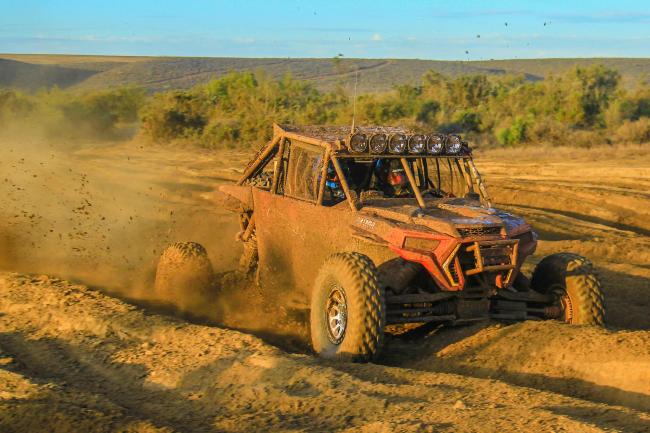
Finally, whenever you have a racing result like at Baja it has to spur you on. Have you figured out where you’ll be competing for 2020?
It’s strange sometimes racing down in Baja, it’s so brutal. At some point in the race you kind of forget about why you’re doing it. You go, “What the hell am I doing here? I’m beating myself up, I’m hungry, I’m tired, and this is rough as hell. Are they trying to kill us?” If you’re not careful you can forget about why you were there in the first place.
The reason why do this, it’s a challenge that not everyone can endure and conquer. To see if you can persevere and get through any inner demons. To be smarter than the course and retain your equipment. To get across the finish line win or lose. But to get down there and win is a dream come true, and obviously that’s our goal every time.
For 2020, most likely, we’ll do the same thing: run the Baja 500 and the 1000 in SCORE, which are the big ones. In the States, we’re going to hit the big races. We’re going to hit the Mint 400, the UTV World Championship, and then several of the Best in the Desert races as well. It doesn’t look like were going to hit an entire season in anything next year, but we’re going to hit the big races. That’s the goal.
Interview by: Chris Leone // UTVUnderground.com
Photos via Cognito Motorsports


